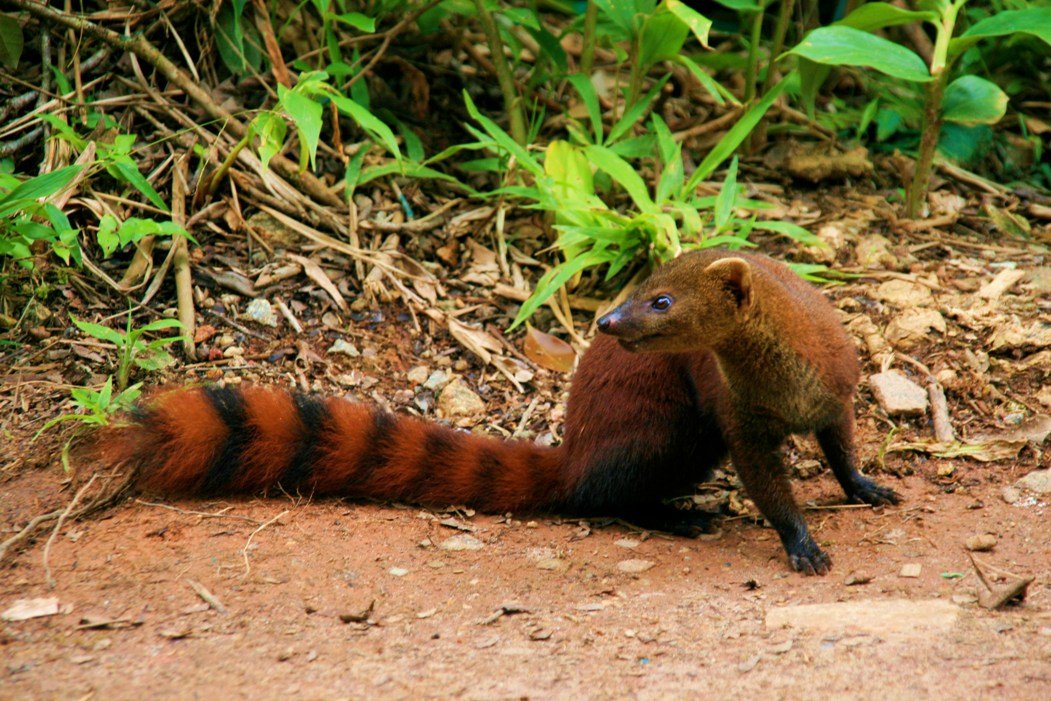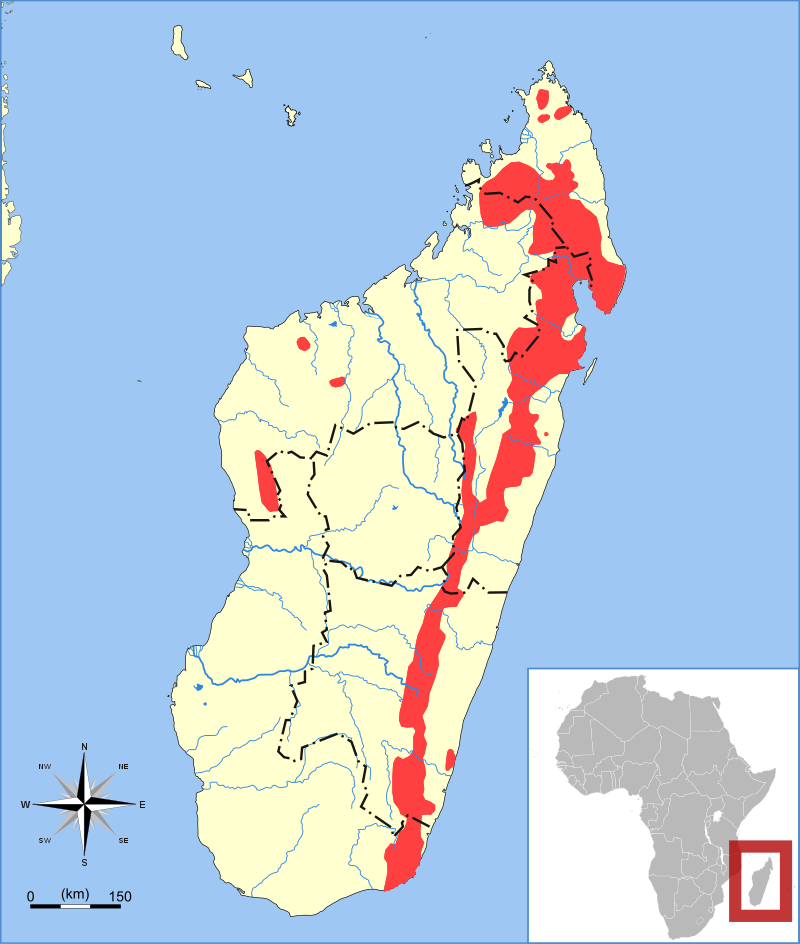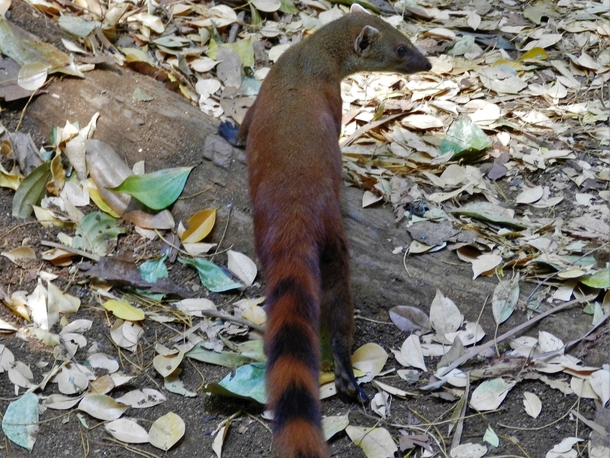
Classification and etymology

There is much disagreement about the placement of Madagascar's carnivores, including the ring-tailed mongoose, within the phylogenetic tree. A 2003 study reported evidence that the Malagasy Carnivora evolved from a single herpestid (mongoose) ancestor.[3]
A monotypic genus, Galidia literally means "little weasel", being a diminutive form of galeē, ‘weasel’ in ancient Greek.[4] Its local common name is vontsira mena, ‘red vontsira’ in Malagasy.[5]
Description

The ring-tailed mongoose is relatively small but is the largest member of the subfamily Galidiinae. It is usually 32 to 38 cm (12.5 to 15 in) long and weighs only 700 to 900 g (25 to 32 oz). Its body is long and slender, and the rounded head has a pointed snout. The body is a dark red color and the feet are black. As the name implies, its bushy tail is covered with black and red rings and is similar to the red panda.
Ring-tailed mongooses are very agile, and good climbers. They are quite playful and are active during the day. Their habitat consists of humid forests. Their diet is mostly of small mammals, invertebrates, fish, reptiles and eggs, but they occasionally eat insects and fruit.
The population of ring-tailed mongooses has decreased by 20% during the period 1989-1999 due to habitat loss.[6] Another problem is competition with the small Indian civet (Viverricula indica).
[citation needed]



No comments:
Post a Comment
Note: Only a member of this blog may post a comment.